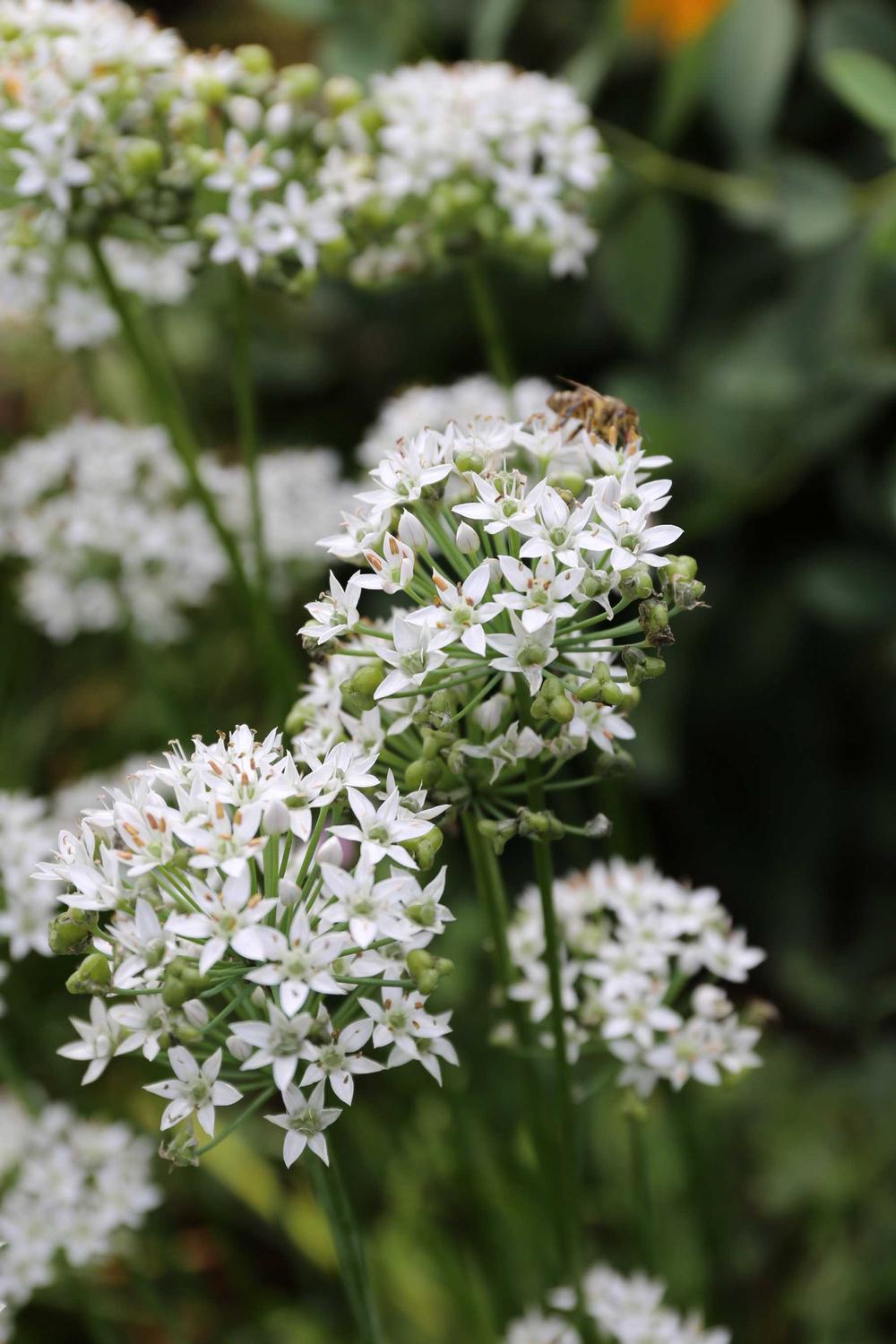TYPES OF ALLIUMS
Alliums are gaining in popularity and it's easy to see why. They are adaptable, troublefree and add lots personality to a garden. Once you start growing them, you’re bound to want more, so here's a quick look at the options.
If you're just getting started with alliums, you might want to begin with the most popular and earliest-blooming variety: Allium aflatunense ‘Purple Sensation’ (shown below). The bulbs are modestly priced, multiply over time, and are easy to interplant among other perennials. The raspberry-purple flower heads measure 3 to 4” in diameter and have slender, 24 to 30-inch stems. The blossoms last for up to 2 weeks in the garden and are also excellent cut flowers.
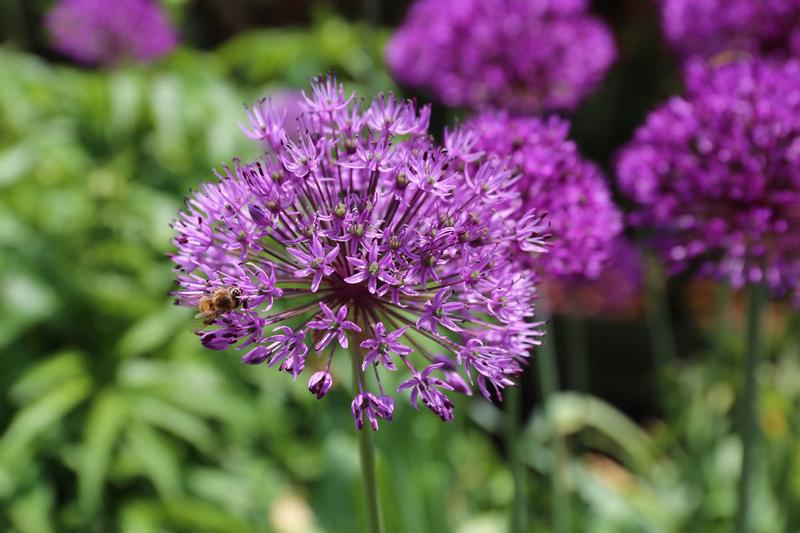
Next to bloom are the bigheaded alliums: ‘Gladiator’, ‘His Excellency’ and ‘Globemaster’. These blossoms can be as big as bowling balls, measuring 5 to 10 inches across on 3 to 4-foot stems. They are always an impressive sight, and their big seed heads continue to add visual interest long after the color has faded. Globemaster is shown below.
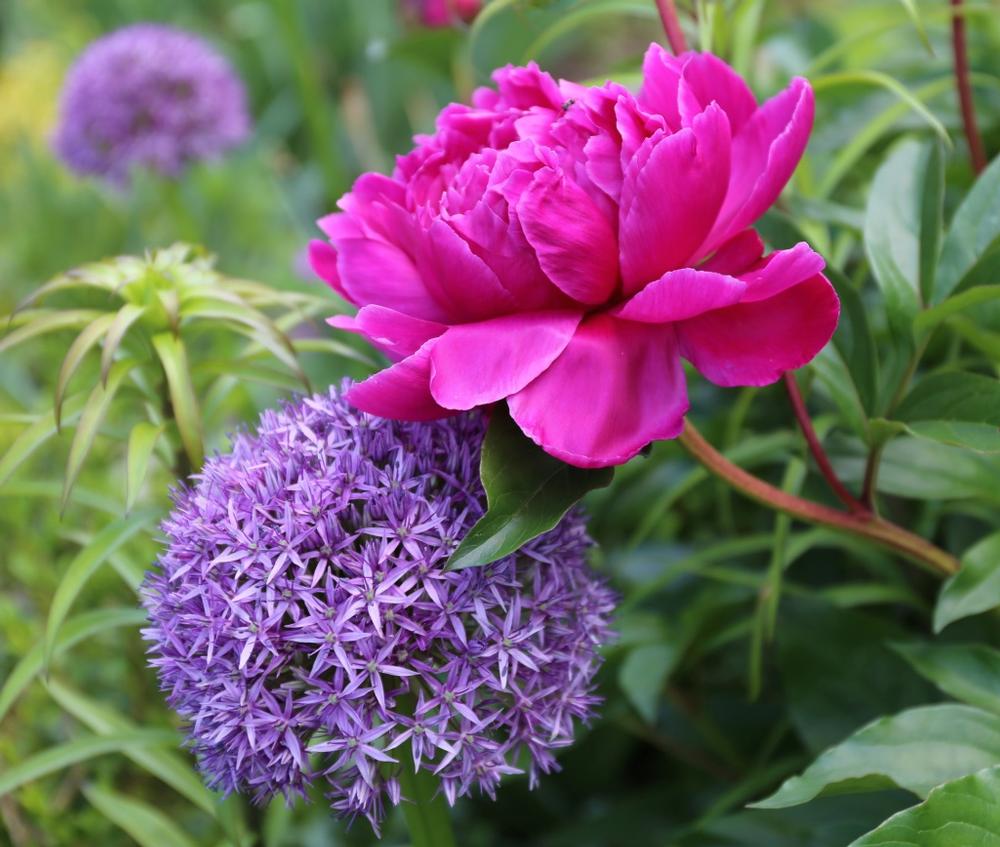
There are two alliums with white flowers that deserve mention. Elegant ‘Mount Everest’ has pure white, 5-inch diameter flowers on tall stems. The misleadingly named Allium nigrum (black onion -- shown below) is a must-have for all-white gardens. Its flower heads are more vase-shaped than round and bloom time is early to midsummer.
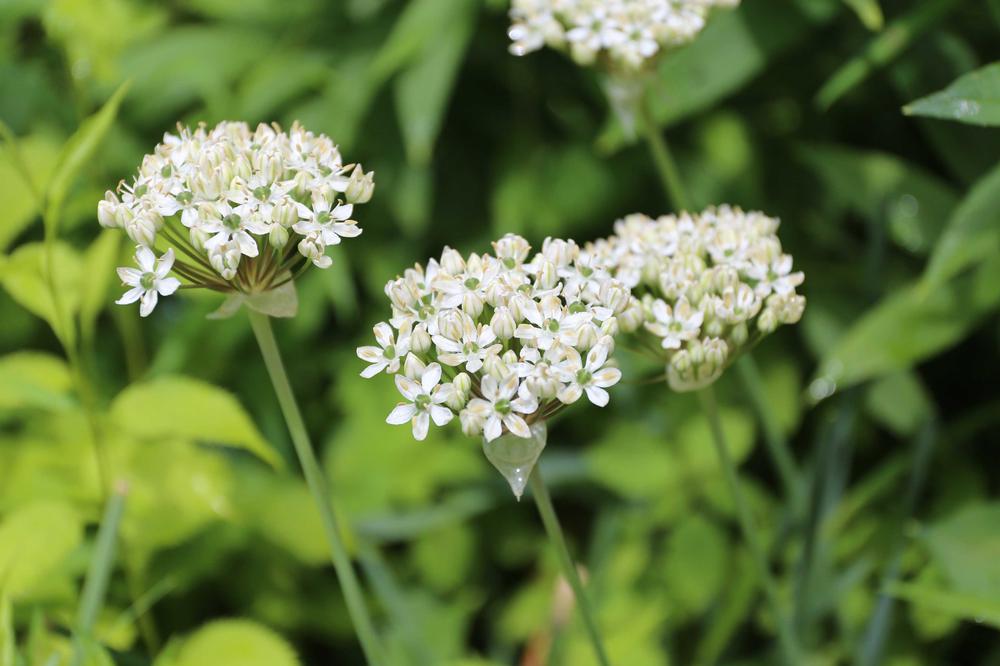
Three equally appealing species are deep maroon A. atropurpureum (purple-flowered onion), starry-eyed A. christophii (Star of Persia) and the two-toned flowers of drumstick allium, A. sphaerocephalon (shown below). Another allium that deserves to be more widely planted is Allium schubertii (tumbleweed onion). Its large and slightly irregular flower heads look like they were caught mid-explosion.
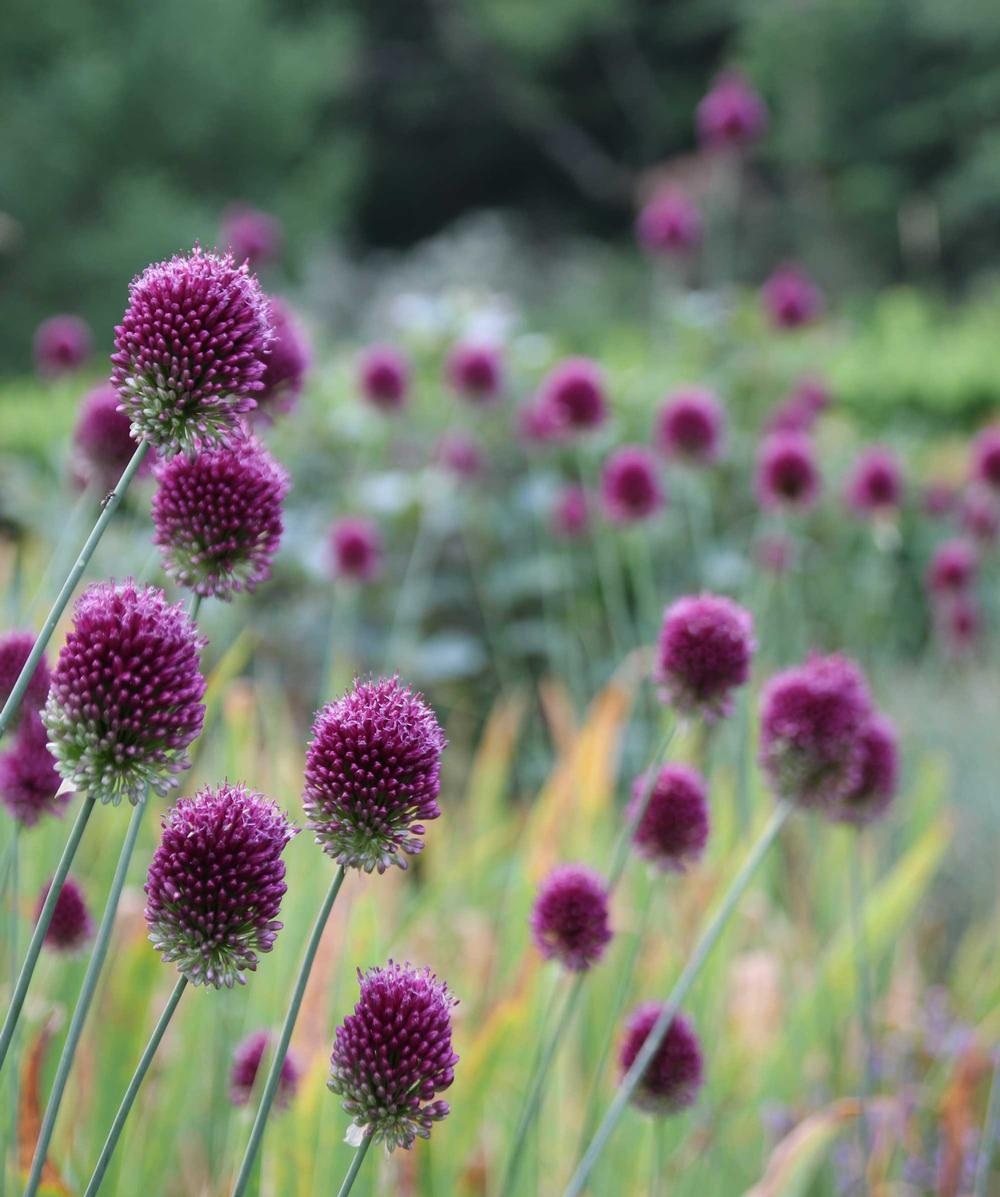
Alliums that grow from bulbs may produce the most dramatic flowers, but herbaceous alliums have their own appeal. These plants resemble chives in their growth habit, with 1 to 2" diameter flowers that emerge from dense clumps of foliage that stay green and lush all season. Bloom time depends on the species and ranges from early summer through October.
One of the best of these clump-forming allliums (shown below) is ‘Millenium’, a hybrid of A. nutans (Siberian chives). The purple, 2-inch diameter flowers bloom in midsummer on 15-inch stems that rise above a tidy clump of foliage. The blossoms last for weeks and are excellent cut flowers. Two very similar summer-blooming alliums are ‘Sugar Melt’, with light pink flowers and ‘Summer Beauty’, with lavender-pink flowers.
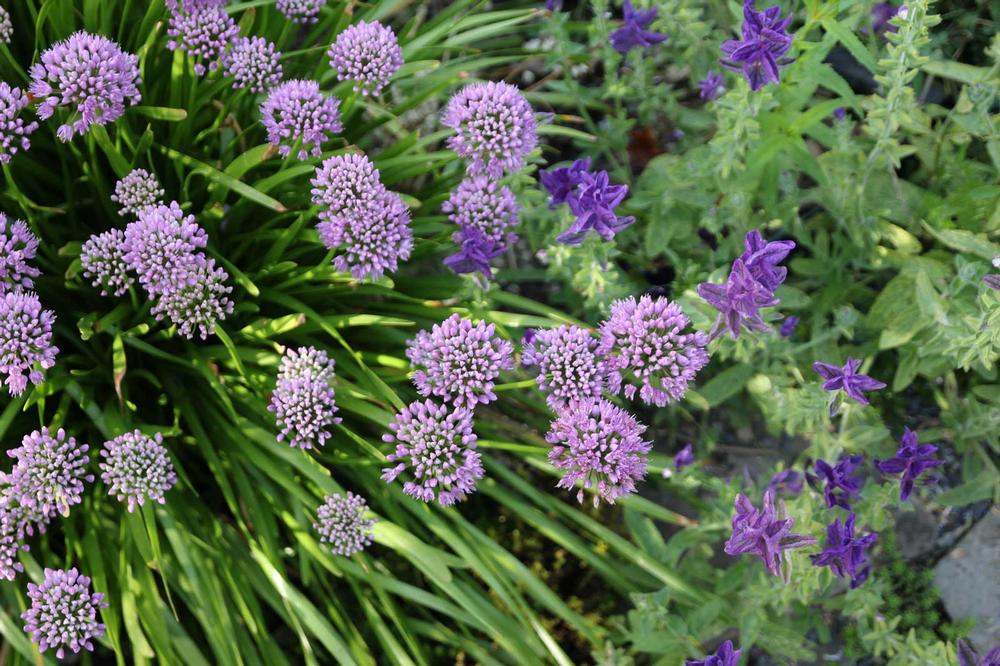
Two others in this group are worth noting. In the vegetable garden, Allium tuberosum (shown below) is known as garlic chives, but in the flower garden it is a late summer beauty with pure white flowers on stiff, 20-inch stems. A. thunbergii ‘Ozawa’ (Japanese onion) is the last ornamental allium to bloom, often waiting until early October. Its orchid pink flowers are an important nectar source for pollinators who are still foraging in late fall.
